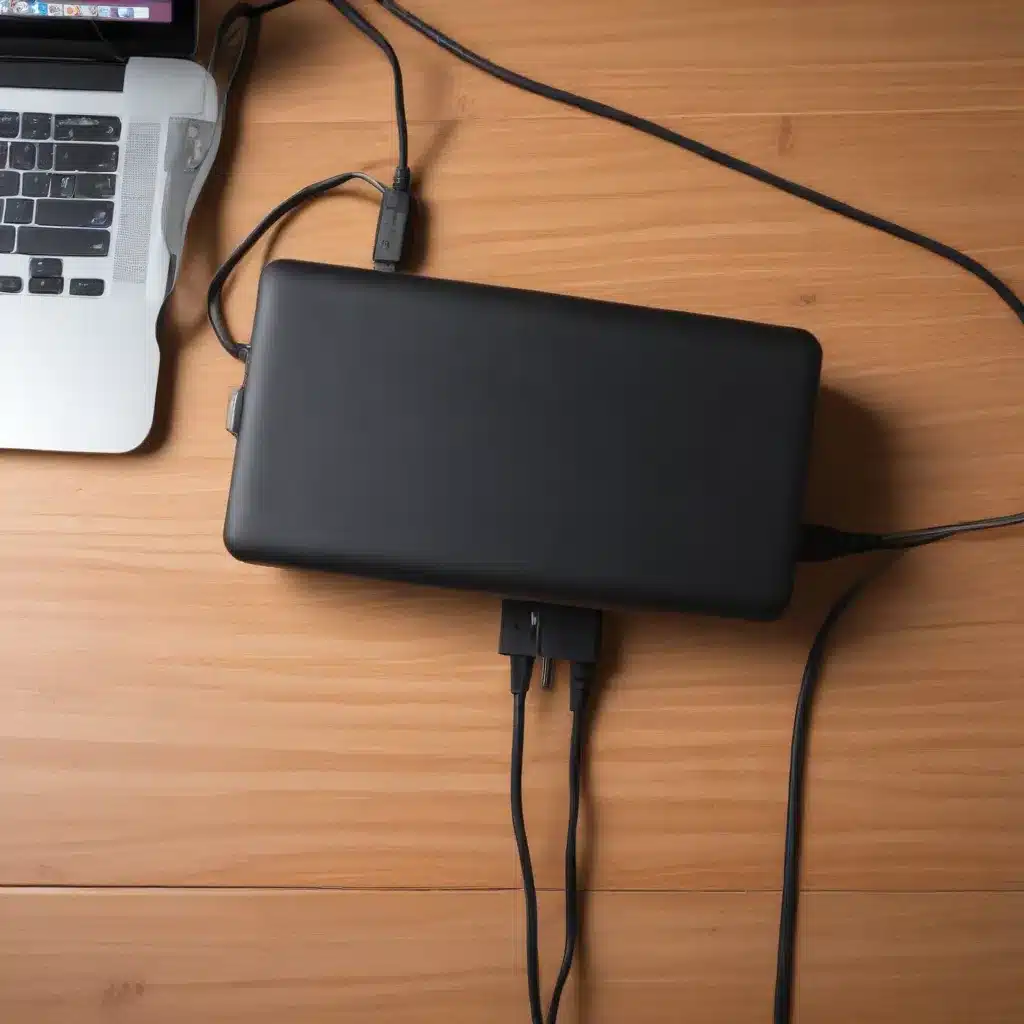
As a seasoned IT professional, I’ve seen my fair share of laptop charging problems. From dead batteries to faulty power adapters, these issues can be frustrating for users, but with the right troubleshooting approach, they can often be resolved quickly. In this comprehensive guide, we’ll dive into the fundamentals of laptop charging, identify common problems, and explore effective solutions to get your device back up and running.
Laptop Charging Fundamentals
Before we delve into the troubleshooting process, it’s essential to understand the basic components and principles behind laptop charging. This knowledge will help you better diagnose and address any issues that may arise.
Battery Basics
At the heart of laptop charging is the battery. This rechargeable power source is responsible for keeping your device running when it’s not plugged into a wall outlet. Laptop batteries come in various sizes and capacities, with lithium-ion (Li-ion) and lithium-polymer (Li-Po) being the most common types. Understanding the health and lifespan of your battery is crucial for maintaining optimal charging performance.
Power Supply Components
The power supply, also known as the charger or adapter, is another crucial component in the laptop charging ecosystem. This device converts the alternating current (AC) from the wall outlet into the direct current (DC) required by your laptop. The power supply connects to your laptop via a charging port, typically a proprietary connector or USB-C. Ensuring that the power supply is compatible with your laptop and delivering the correct voltage and amperage is essential for successful charging.
Charging Protocols
Modern laptops often employ various charging protocols to optimize the charging process and maintain battery health. These protocols may include fast charging, adaptive charging, or even wireless charging capabilities. Familiarizing yourself with the specific charging protocols supported by your laptop can help you troubleshoot issues and ensure that your device is charging as efficiently as possible.
Identifying Charging Problems
Once you have a basic understanding of laptop charging fundamentals, it’s time to delve into the process of identifying common charging issues. By systematically examining the battery, power connections, and power source, you can often pinpoint the root cause of the problem.
Battery Diagnosis
The first step in troubleshooting a laptop charging issue is to assess the health of the battery. This can be done by checking the battery’s charge level, examining for physical damage, and monitoring its performance over time. If the battery is no longer holding a charge or appears to be swollen, it may be time for a replacement.
Connector Inspection
Another potential source of charging problems is the charging port on your laptop. Inspect the port for any physical damage, such as bent pins or debris, that could be preventing a proper connection with the power supply. Additionally, ensure that the charging cable is securely inserted into both the laptop and the power adapter.
Power Source Verification
Finally, it’s crucial to verify that the power source you’re using is functioning correctly. Check the wall outlet, power strip, or extension cord to ensure that they are providing the necessary electrical current. You can also try using a different power outlet or power supply to rule out any issues with the power source.
Troubleshooting Charging Issues
Once you’ve identified the potential source of the charging problem, it’s time to explore the appropriate troubleshooting steps to resolve the issue. From battery replacement to adapter troubleshooting, these solutions can help get your laptop back up and running.
Battery Replacement
If the battery is the root cause of the charging problem, it may be necessary to replace it. Consult your laptop manufacturer’s guidelines for the proper battery model and replacement procedure. Be sure to properly dispose of the old battery and install the new one according to the manufacturer’s instructions.
Adapter Troubleshooting
If the power adapter appears to be the culprit, try using a different adapter that is compatible with your laptop. Ensure that the adapter is delivering the correct voltage and amperage, as specified by the manufacturer. In some cases, a faulty adapter may need to be replaced.
Motherboard Considerations
In rare cases, a charging issue may be caused by a problem with the laptop’s motherboard. This could be due to a hardware failure or a software-related issue. If you’ve exhausted all other troubleshooting options, it may be necessary to consult a professional technician or the laptop manufacturer for further assistance.
Preventative Maintenance
To minimize the likelihood of encountering laptop charging issues in the future, it’s essential to adopt some preventative maintenance practices. By following these tips, you can help extend the life of your laptop’s battery and power supply.
Proper Storage Techniques
When not in use, store your laptop in a cool, dry place. Avoid exposing it to extreme temperatures, humidity, or direct sunlight, as these conditions can degrade the battery over time. If you plan to store your laptop for an extended period, it’s recommended to keep the battery charge level between 40-60% to prevent overcharging or deep discharge.
Charging Habits
Develop healthy charging habits to maintain your laptop’s battery health. Avoid leaving your laptop plugged in and charging constantly, as this can lead to overcharging and reduced battery lifespan. Instead, try to charge your laptop only when necessary and allow the battery to discharge to a reasonable level before recharging.
Environmental Factors
Consider the environment in which you use and charge your laptop. Ensure that the power outlet and surrounding area are free from dust, moisture, and other contaminants that could interfere with the charging process. Additionally, be mindful of the ambient temperature, as extreme heat or cold can impact the charging performance and battery longevity.
By understanding the fundamentals of laptop charging, identifying common issues, and implementing preventative maintenance strategies, you can effectively troubleshoot and resolve a wide range of charging problems. Remember, if you encounter persistent or complex issues, it’s always best to consult with a professional IT technician or the laptop manufacturer for further assistance.
For more information on IT solutions and troubleshooting, be sure to visit https://itfix.org.uk/.












